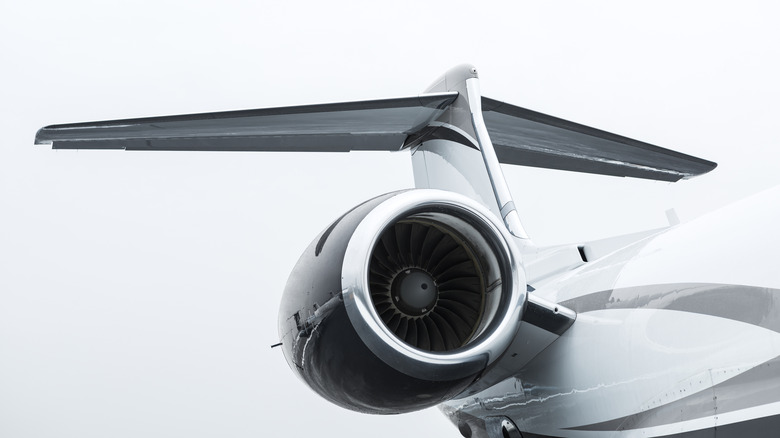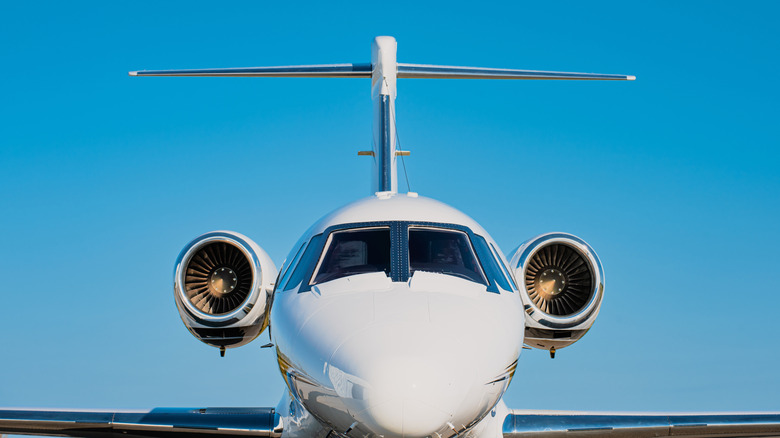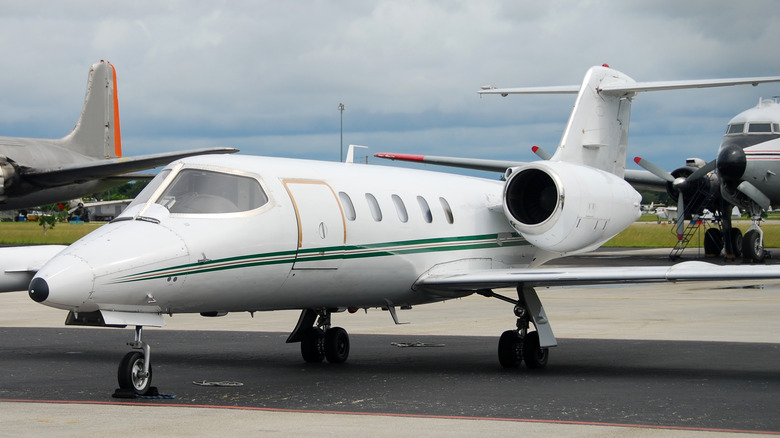Why Do Most Private Jets Have Engines At The Back?
If you've flown on a commercial airline, chances are the engines were under the wings. But step in front of most private jets, and you'll notice a big difference. Instead of being slung under the wings, the engines are often mounted on the rear fuselage, close to the tail.
It's a layout you'll find across a wide range of business jets, from entry-level light jets like the Embraer Phenom 100EX, to long-range executive aircraft like the Dassault Falcon 8X. This isn't a stylistic choice or a throwback to older designs. It's practical.
Private jets aren't just smaller versions of airliners. They serve a different purpose and fly into different kinds of airports. There's also the question of design. Smaller jets have different aerodynamic needs than bigger commercial aircraft, like being lighter and the ability to cruise at higher altitudes. The engine placement takes these needs into account. No design decision in the aerospace industry is taken without careful thought and consideration. Here's how the engine layout supports the way private jets are designed and operated.
Smaller jets don't need big, heavy engines
Modern commercial jets use large, high-bypass turbofans that are heavy and wide. These work well on under-wing mounts because there's enough ground clearance to make sure the engine doesn't scrape the ground when landing. Private jets, however, don't need that kind of power. Their engines are lighter, narrower, and more compact; ideal for mounting at the back without throwing off the aircraft's balance.
This configuration makes structural design easier, too. Putting the engines in the rear means the wings can remain thin, light, and uninterrupted. That's a big deal when efficiency matters.
Rear-mounted engines are also grouped closer together, which matters in case one fails, the resulting imbalance is less dramatic, making it easier for the pilot to keep control. On top of that, there's less noise in the cabin, since the engines are farther from where passengers sit. For business travelers, that quieter ride is another subtle but important win.
Engine location makes airport operations simpler
Unlike airliners that land at major airports with long runways, private jets often use smaller airports where ground services are minimal. With no engines hanging under the wings, private jets sit closer to the tarmac. That makes boarding easier, since a basic ladder can do the job. No special vehicles or infrastructure needed.
There's also the issue of foreign object damage (FOD). Engines mounted low to the ground are more likely to suck in debris. Rear-mounted engines sit higher, making them less vulnerable when taxiing on gravel or debris-strewn surfaces. That's one less maintenance risk for operators to worry about.
Ultimately, rear engines make practical sense for how private jets are flown, serviced, and boarded. While commercial aviation has mostly moved away from this layout, the unique demands of business aviation keep it relevant. Rear-mounted engines aren't just a relic, they're the right tool for the job.


